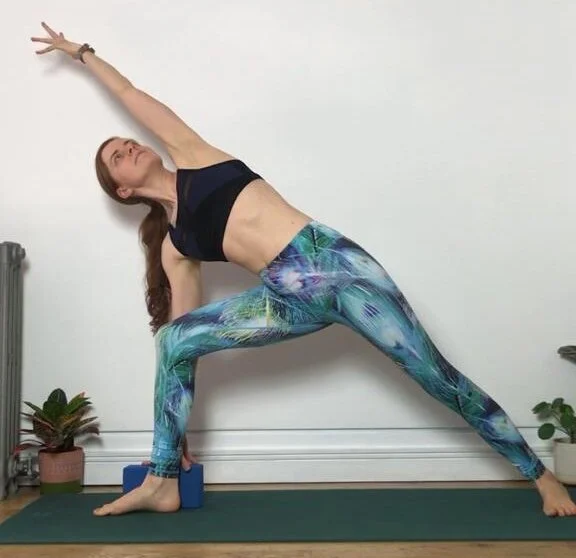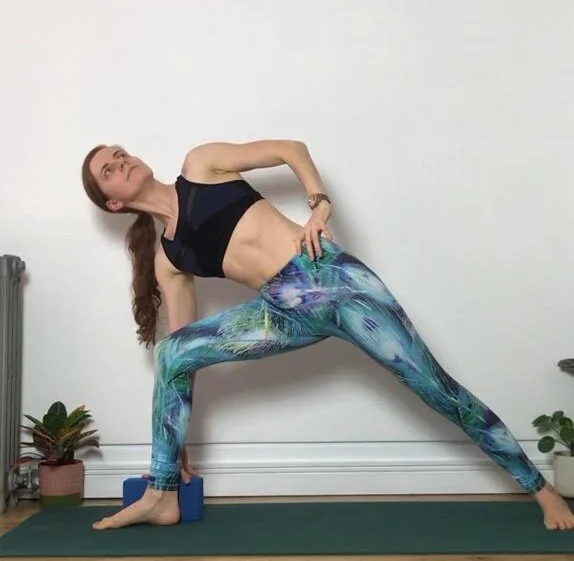What we'll be working on in 2021
Olivia Marley
At the beginning of each new year I spend a bit of time thinking about where I want to take my students over the 12 months ahead. And, using a process I picked up from one of my own teachers (Jason Crandell), I’ll think about what mental, physical and emotional qualities I want to help people cultivate in class. Then whatever we’re working on throughout the year - postures, techniques or anything else - everything will be underpinned by those elements. So (only a few days late) here’s what I’m aiming to develop with you lovely people this year....
3 mental qualities
Agency – I got this idea from another brilliant teacher I’ve recently started studying with, Alexandria Crow (and who I’ll be training with for the rest of 2021 to help develop this point further). Through this theme I aim for students to genuinely feel like they can take any of the options I offer in class without being judged or pressured into doing something different, to choose to rest whenever you want to, or perhaps even leave class if you need to. The longer I do this job the more I realise how different people’s experiences of coming to class on any particular day are, and so how differently they each might need to approach (or choose to avoid) different postures or techniques. Also, if people feel empowered to genuinely do what feels best for them in a group class, might this make yoga feel more welcoming, inclusive and perhaps encourage more diversity among students (and so eventually teachers)...?
Attention – this one keeps building on a strand from last year because this is still something I’m continually working on (and that my phone/ laptop/ social media definitely doesn’t help with!). I also appreciate that for lots of students it’s even harder to focus on class right now, when we’re working online and they are at home with family/ pets/ housemates etc. But, to me, paying attention to what I’m doing and not thinking about the rest of my life for 60 mins feels like one of the key reasons why I feel better after practice. I think that effect is probably the same whether it’s been a 60 minute vinyasa class or an hour long savasana (which kind of backs up the fact that you should be empowered to rest/ take any option that suits you in class). And, since my cues are sometimes different to other teachers and I ask students to make shapes that aren’t always classical yoga poses, paying attention to class also means students hopefully following my instructions more easily! (You’re always welcome to filter out the jokes though 🥴)
Equilibrium – my hope is always that by the end of class you’re feeling calmer than you were when you walked in. But this is also something I’d like to cultivate during the more physically challenging parts of class… can you accidentally fall out of a balance without mentally beating yourself up? Can you watch a demonstration of something you don’t think you’ll be able to do without starting an internal monologue it?
3 physical qualities
Precision and sensitivity – These two are inextricably linked. When you begin practising yoga postures it makes sense that you notice the most obvious sensations first. But, over time, you might start to be able to feel what’s going on in other parts of your body. Developing this sensitivity and a higher level of body awareness will allow you to be more precise in your movements (eg is that leg doing what you think it’s doing..?) and notice the effects of what you’re doing more easily. Trying to work with precision and sensitivity also helps keep my mind from wandering, so I hope it will support your work on our second quality (listed above) of paying attention.
Evenness - I don’t mean by this that I want all of our bodies to be completely symmetrical by the end of 2021 (that would be weird, impossible, and probably pointless!). Instead, I’ll be thinking instead about even and steady breathing, and working your body relatively evenly. For example, in vinyasa yoga we tend to stretch the backs and outsides of your hips and thighs relatively more than we strengthen them – can we start to address this and perhaps pay more attention to the fronts and insides too? Or, in relation to your shoulders, we spend a lot of time with your arms overhead or in front of you (think plank, downward dog, high and low lunge, handstand etc). Can we add in anything to strengthen the muscles that pull your arms back?
3 emotional qualities (these all overlap with each other and probably give a reasonable insight to my state of mind atm!)
Patience – with yourself on any given day, with your body when it gets injured, with the process of turning up to class regularly or of constantly noticing your mind has wandered and bringing your attention back on to what you’re doing. And especially at the moment: with people/ pets/ neighbours at home that distract you from an online class! Although that last one might be selfish on my part because I love seeing the pets and kids joining for savasana in your zoom squares….
Compassion – for yourself when you’re trying to stay focused but your mind keeps wandering, for your body when it gets injured, for your loved ones if they’re being annoying, and for yourself if you need to rest more often than normal during class or if generally you’re having a hard time (we are still in a global pandemic after all)
Gratitude – for what your body can do and for still being here and able to practice after whatever you have personally been through over the past year or so.
So if you come to class/ a workshop/ a teacher training with me this year, this will underpin what we’ll be working on (and no, this isn’t a recent picture…. it’s from this time last year, in Oman). So if any of this sounds interesting I hope to see you in a Zoom square soon. And perhaps in person in not too long! 🤞










